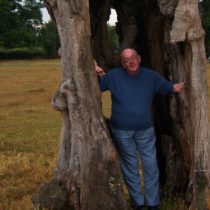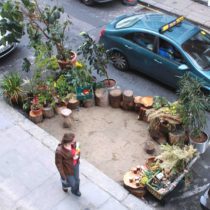Landscape Architecture for Landscape Architects › Forums › PLACES & SPACES › Another Failed Landscape – When Ideology Trumps User Needs
- This topic has 1 reply, 20 voices, and was last updated 14 years ago by
 Jon Quackenbush.
Jon Quackenbush.
-
AuthorPosts
-
November 18, 2011 at 4:17 pm #159790
 Les BallardParticipant
Les BallardParticipantGo write 100 times “If I can’t do it, no-one can”. You are there to play God, you have a piece of paper that says so, just make sure you get it right.
In Britain we have lost all our girl black poplars and the boys, that are on general sale and come from micro propagation or cloning, aren’t being bought to plant. They are dying out because the weather is warmer now than this post ice age species preferred and we aren’t planting it far enough north to oblige. Same with holly trees as opposed to bushes. It doesn’t take much nous to plant black poplar in the north of England and holly in lowland Scotland but folk do not think to do so because they await some moving finger to write it in ruddy stone for them. You are the expert, go spurt forth!
November 29, 2011 at 10:27 pm #159789 Dave AndrewsParticipant
Dave AndrewsParticipantFirst off, the article’s author is a bit of a moron, so no need to get too hung up on that.
However, I agree with many of the comments before regarding the fact that our open space is often underused. But I do think that much of society assumes that grass and trees are what open spaces are all about, so when we design in this newer way there is a certain amount of public education that has to happen (I am saying this in the context of the US and western Europe).
Having said that, I am beginning a research project looking at how vacant or underused spaces could be put to better use. I am focusing on a more urban situation (Dublin, Ireland) but in the wider context this might mean incoporating things like storm water attenuation or wind mills or other municipal treatment plants creatively into the traditional park landscape. This would help to begin the discussion about more sustainable methods of dealing with our waste, and help educate people like the author that we can’t just use all the water we want, not take some sort of conservation role regarding native plants and animals, and well not just assume that a Landscape Architect would solve the problem.
And lastly, while the hand rendered drawings of that park looks pretty attractive, it does seem as though the park is taken up primarily with attenuation, encircled by walking/seating areas. One would expect there was some degree of public consultation which identified a scope for the project, but you would also have to imagine you could have catered for more uses within that space while still serving its apparent main need as a attenuation facility.
-
AuthorPosts
- You must be logged in to reply to this topic.


